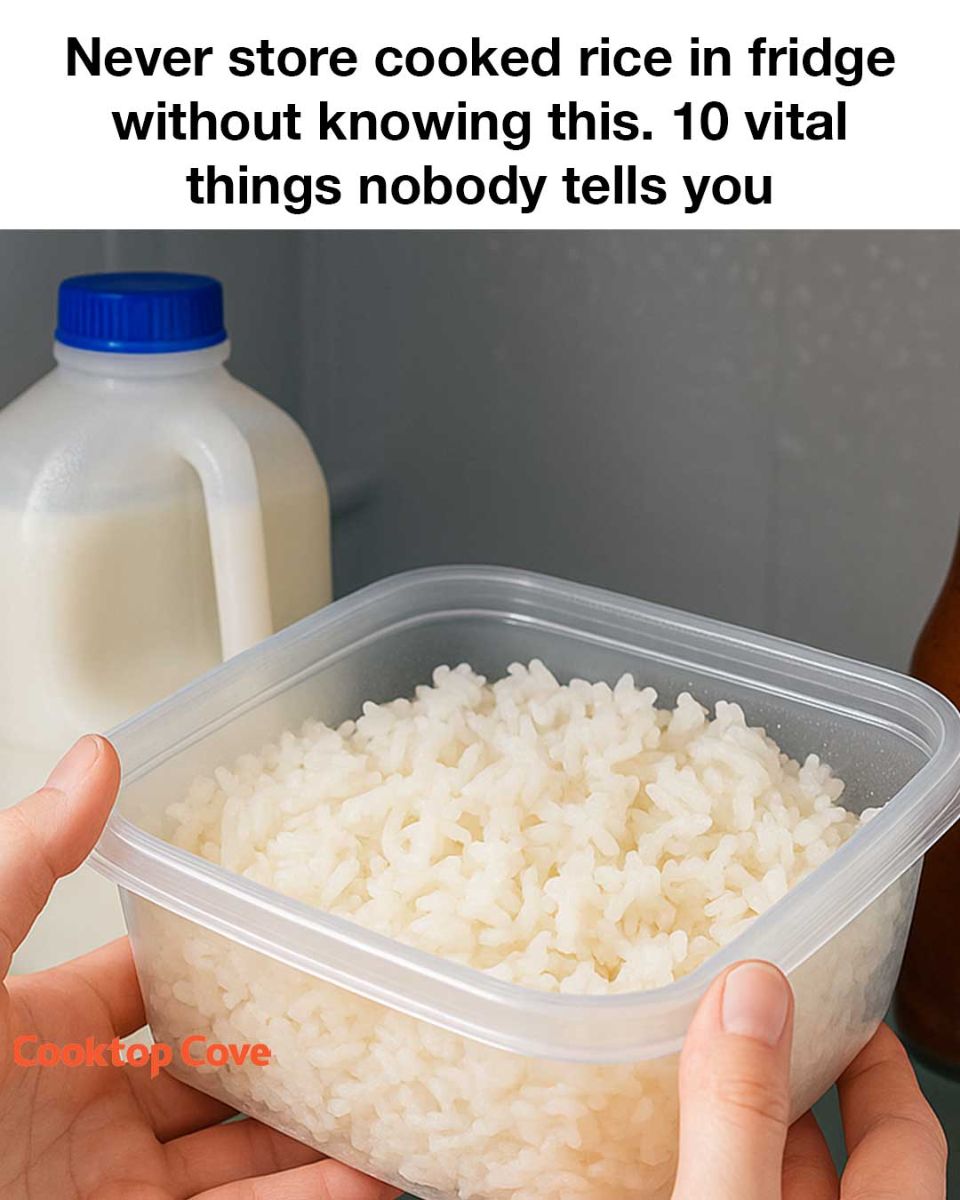Rice is a staple food for more than half of the world’s population, cherished for its versatility and ability to complement countless dishes. However, many people are unaware of the potential dangers associated with improperly storing cooked rice. While it may seem harmless to toss leftover rice into the fridge, failing to follow proper storage guidelines can lead to foodborne illnesses.
Understanding the science behind rice spoilage and the best practices for storage can help you avoid these risks. This article will delve into ten crucial aspects of cooked rice storage that often go unnoticed, ensuring you keep your meals safe and delicious.
1. The Science Behind Cooked Rice Spoilage
Cooked rice is particularly susceptible to spoilage due to its high moisture content, which provides an ideal environment for bacterial growth. When rice is cooked, the heat kills most bacteria, but spores of certain bacteria, such as Bacillus cereus, can survive. These spores can germinate and multiply if the rice is left at room temperature for too long.
Once rice is cooked, its pH level becomes more neutral, further encouraging bacterial growth. This is why it’s crucial to handle and store cooked rice properly to prevent spoilage and potential foodborne illnesses.
2. Why Room Temperature is a No-Go
Leaving cooked rice at room temperature for extended periods is a common mistake that can lead to spoilage. The danger zone for bacterial growth is between 40°F (4°C) and 140°F (60°C). Within this range, bacteria can double in number every 20 minutes. If cooked rice is left out for more than two hours, it can become unsafe to eat.
To minimize the risk of bacterial growth, it’s essential to cool rice quickly and store it in the refrigerator as soon as possible. This helps keep the rice out of the danger zone, reducing the likelihood of spoilage.
3. The Role of Bacillus Cereus
Bacillus cereus is a type of bacteria commonly found in soil and food, including rice. It can produce spores that survive cooking temperatures. If cooked rice is left at room temperature, these spores can germinate and produce toxins that cause food poisoning. Symptoms of Bacillus cereus food poisoning include nausea, vomiting, and diarrhea, typically occurring within 6 to 15 hours after consumption.
To prevent Bacillus cereus contamination, it’s crucial to handle cooked rice properly by refrigerating it promptly and reheating it thoroughly before consumption.
4. How Quickly Should You Refrigerate Cooked Rice?
To ensure the safety of cooked rice, it’s important to refrigerate it within two hours of cooking. This helps prevent the growth of harmful bacteria and the production of toxins. If the ambient temperature is above 90°F (32°C), the time frame for safe storage reduces to just one hour.
To speed up the cooling process, spread the rice in a thin layer on a baking sheet or divide it into smaller portions before placing it in the refrigerator. This allows the rice to cool more quickly and evenly.
5. The Ideal Storage Temperature
The ideal storage temperature for cooked rice is below 40°F (4°C). Keeping rice at this temperature slows bacterial growth and helps preserve its quality. It’s important to use an airtight container to prevent the rice from absorbing odors from other foods in the fridge.
Additionally, storing rice in the coldest part of the refrigerator, such as the back or bottom shelf, can help maintain a consistent temperature and further reduce the risk of spoilage.
6. How Long Can You Safely Store Rice in the Fridge?
Cooked rice can be safely stored in the refrigerator for up to four to six days. Beyond this time frame, the risk of spoilage and bacterial growth increases significantly. It’s important to label containers with the date of storage to keep track of how long the rice has been in the fridge.
Next Page

